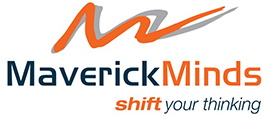The start of a new year often brings a flurry of new intentions and resolutions. A theme that seems to be in focus at the moment is de-cluttering and reducing consumption. A couple of books making the rounds at the moment are Marie Kondo’s The Life-Changing Magic of Tidying Up: The Japanese art of decluttering and organizing and James Wallman’s Stuffocation.
Madeline Somerville is a regular writer on consuming less:
Yes, you recycle. But until you start reducing, you’re still killing the planet
Buying begets buying: how stuff has consumed the average American’s life
Oliver Burkeman regularly shines a light on a range of topic:
Can you shop your way to happiness?
It’s interesting to note what gets our attention. I began the year with my own de-clutter and found a number of people in my network looking to consume less and get rid of stuff. I even had a conversation with a friend about the intriguing artist Margaret Olley and her huge collection of material objects in which she found inspiration. It was a fascinating discussion and another story.
For me, as a hybrid professional, that crosses sectors – business/creative industries/education and the arts – I am acutely aware of my inner bower bird – the collector that resides within me. I gather objects, artefacts, journal articles, material, paper and other attractive paraphernalia. I use this ‘stuff’ as inspiration and for a range of purposes – writing, making artworks, in creativity coaching, facilitation and running workshops. I’m also conscious that some of it has been dormant for some time.
The summer break was spent clearing away some of this. Getting rid of things that have sat idle for too long. I’ve taken time to review what I have and have begun the process to see if I can breathe new life into this odd assortment of materials and objects. It is a form of re-cycling, up-scaling and re-design. The same goes for my business as I reflect, re-frame and re-design.
Doing this got me thinking about how this relates to business. What stuff do we have lying around in our businesses that take up space, time, energy, and may cause stress. It could be old technology, archival boxes never opened, draws never emptied, and ideas that have sat idle and never landed properly.
Sometimes we really do have to dismantle and let go of ‘stuff’ in order for other things to happen. I know many creative practitioners that will eliminate or even destroy their work in order to create something new. The poet David Whyte suggests that sometimes we have to ‘unmake’ aspects of our lives to get back to living the life we want. Sometimes we may have to unmake aspects of our business, to move it on, or to reconnect our hearts with our business. What we love about our businesses, what inspires us and why it actually exists.
With that in mind what stuff are you holding onto in your business that needs to be dismantled, discarded, given away, re-cycled or up-cycled? This applies to ideas as much as material things. What ideas are you sitting on that are well passed their use by date, what ideas might you breathe new life into or completely re-design?
It’s still early in the year and a good time to review what is going on and set the scene for the year ahead. So here’s 3 things to reflect on:
1. What stuff, be it material objects or ideas, do you have in your business that simply need to be got rid of. They have taken up too much energy, time, thought and money. What’s some of the small stuff that you can move on easily with little or no sweat?
2. What stuff or ideas are lying dormant – that given the right sort, or amount of attention, are worth keeping, but need up-cycling? How might you do this? Who can you talk to about your idea to help you gain a new perspective and shine light on it from a different perspective? Who might you collaborate with? Who in your business or network can help you breathe new life into it? If you don’t have the energy for it, who else might, and who might you offer it to- gift it to someone else who can make it happen. All it might take is a conversation to help you move your ideas and stuff on to the next stage – whatever that is…
3.Does your idea or stuff require complete transformation. This is more than recycling or upcycling – this is innovation. Think of it as the diamond encased within the carbon, waiting to be revealed – to have its time. Where are the diamonds hidden in your business?
Whichever way you go requires levels of risk, courage and trust – often a leap of faith. Remember – when one door closes, another opens – and that’s a good time to get rid of stuff.

